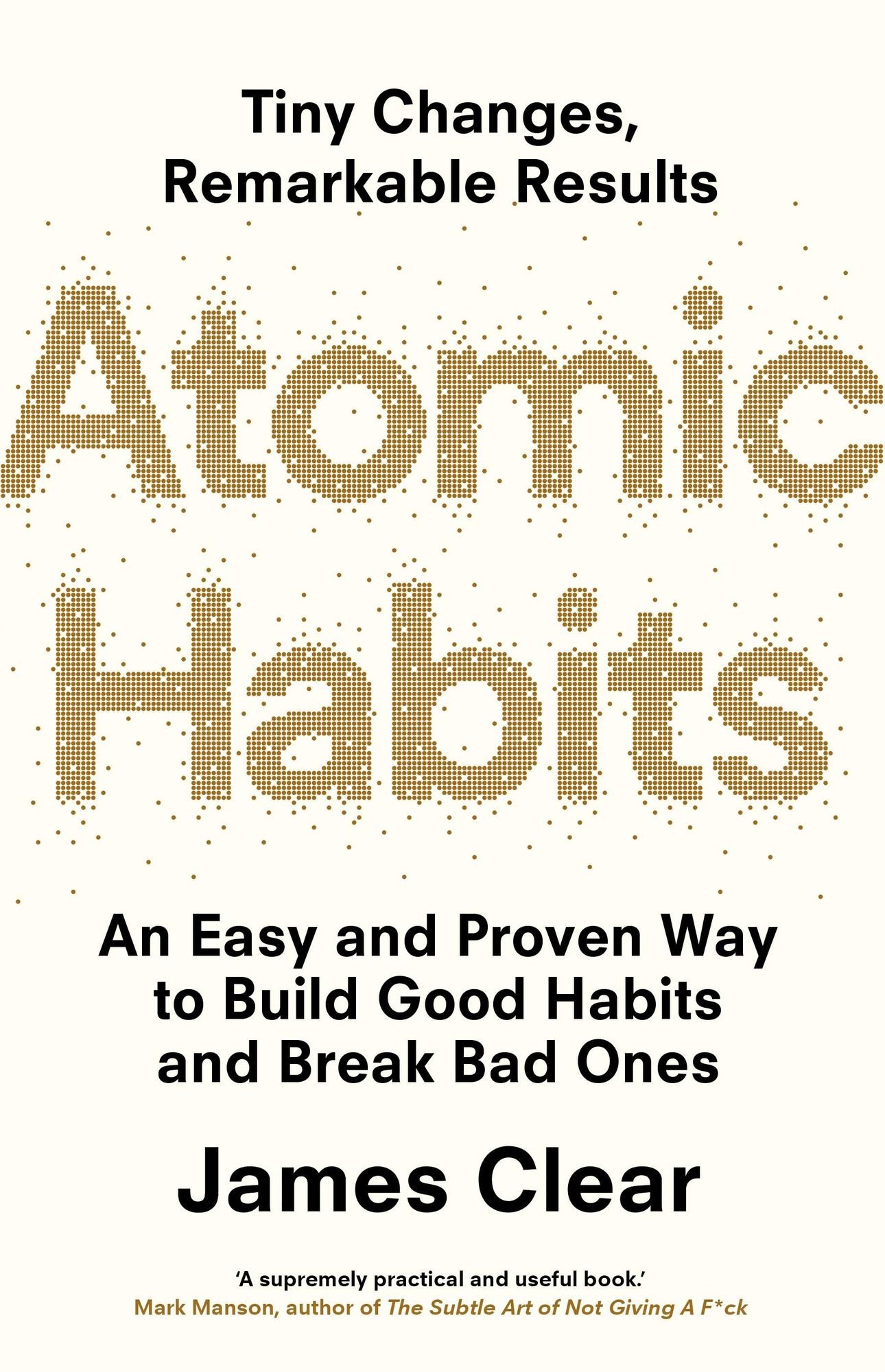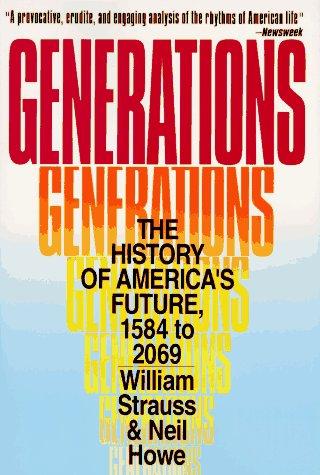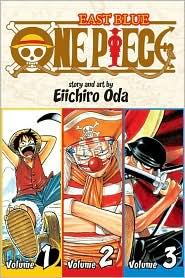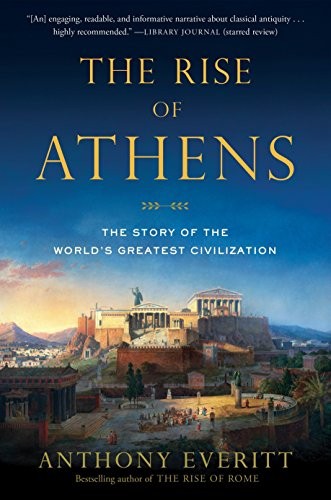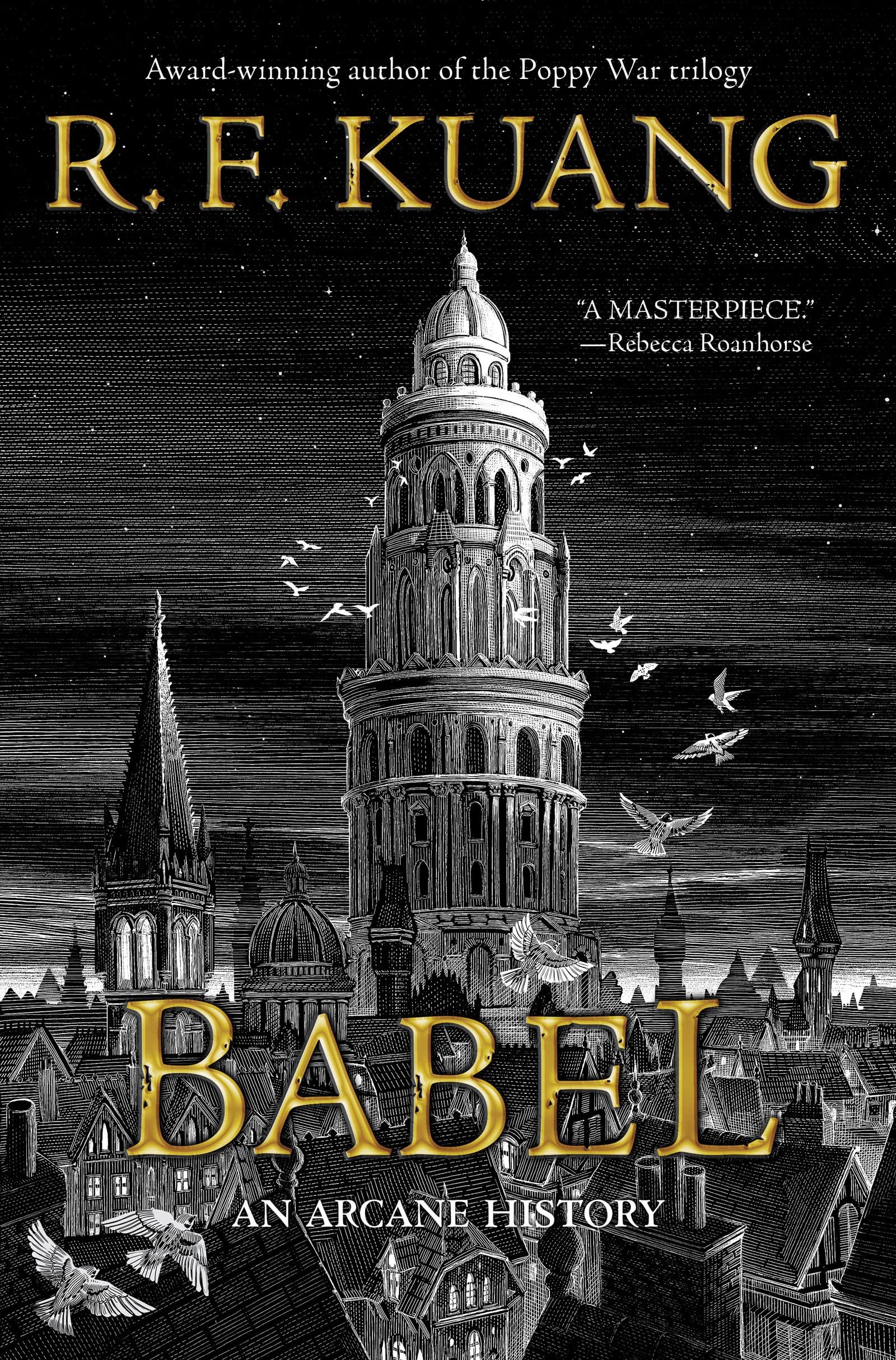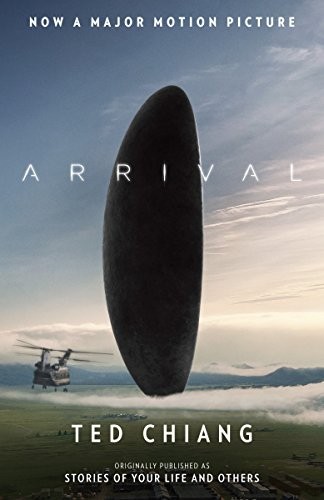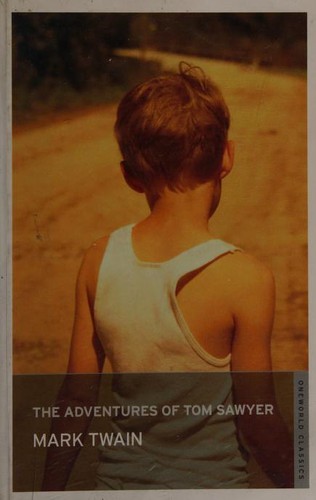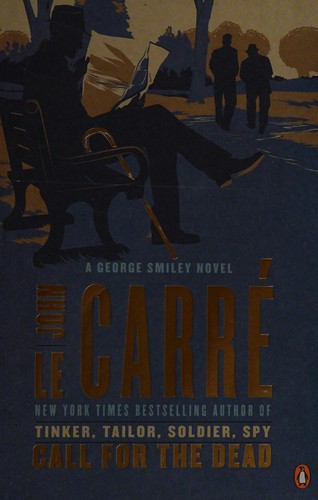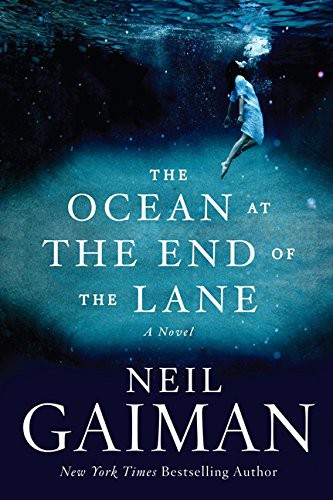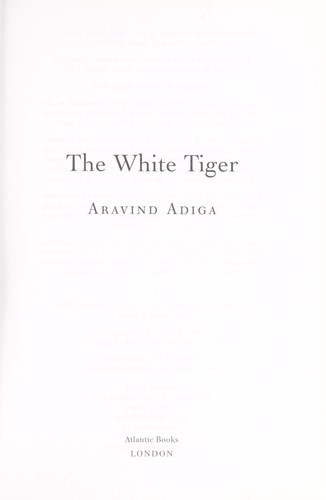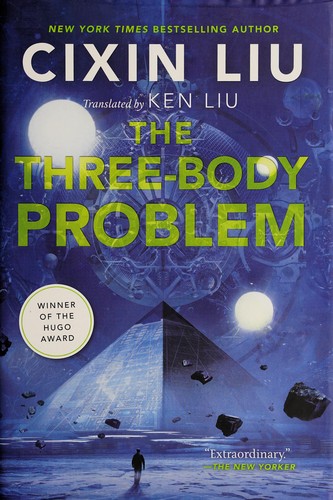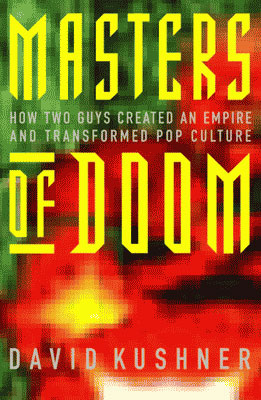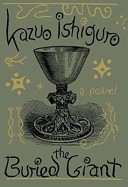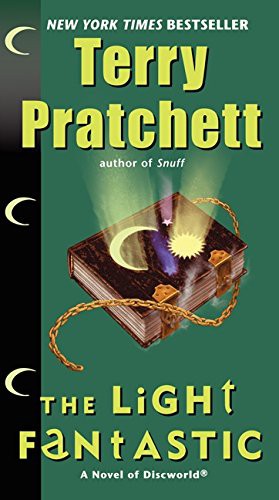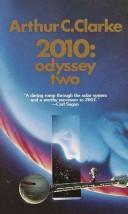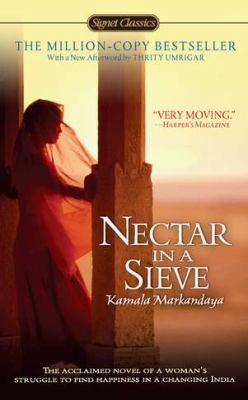User Profile
I like to read science fiction, classics, thrillers, history and technology.
This link opens in a pop-up window
Ashwin's books
To Read (View all 584)
Read (View all 264)
User Activity
RSS feed Back
Ashwin reviewed Arrival by Ted Chiang
Ashwin reviewed The Adventures of Tom Sawyer by Mark Twain
Review of 'The Adventures of Tom Sawyer' on 'Goodreads'
5 stars
This review is cross-posted from my blog here: timefarer.wordpress.com/2017/03/05/the-adventures-of-tom-sawyer/
One of the most memorable chapters from my childhood English textbooks was Tom Sawyer, fooling his friends to paint a fence. From then on, Tom Sawyer, his buddy Huckleberry Finn, that period of US history and author Mark Twain have continued to appear so many times in my readings that I simply had to pick up this classic when I saw it. On its surface, The Adventures of Tom Sawyer is filled with fun stories centered around Tom, that happen in St. Petersburg, a fictional village along the Mississippi river. Tom seems to have lost his parents a long time ago and is being brought up by his Aunt Polly, a big hearted naive woman and her children Sid and Mary. Tom is a hyper-active clever rascal, who regularly creates trouble at school and gets switched by teachers on …
This review is cross-posted from my blog here: timefarer.wordpress.com/2017/03/05/the-adventures-of-tom-sawyer/
One of the most memorable chapters from my childhood English textbooks was Tom Sawyer, fooling his friends to paint a fence. From then on, Tom Sawyer, his buddy Huckleberry Finn, that period of US history and author Mark Twain have continued to appear so many times in my readings that I simply had to pick up this classic when I saw it. On its surface, The Adventures of Tom Sawyer is filled with fun stories centered around Tom, that happen in St. Petersburg, a fictional village along the Mississippi river. Tom seems to have lost his parents a long time ago and is being brought up by his Aunt Polly, a big hearted naive woman and her children Sid and Mary. Tom is a hyper-active clever rascal, who regularly creates trouble at school and gets switched by teachers on a daily basis. He always wants to be the alpha male at school and is always in love with the prettiest girl in school. He mostly hangs around with Huckleberry Finn, a homeless vagabond child of a drunk father. His idyllic world starts cracking bit by bit once he and Finn witness a murder and what follows after that.
First things first, this is not a moral and social work like To Kill A Mockingbird. This is an entertaining book for children that just happens to have enough elements to engage adults. To me it seemed like the characters and settings were a combination of the mysteries by Enid Blyton and the naughty William Brown series by Richmal Crompton. (Both these authors came after Twain, so his works might have heavily inspired them.) This is not an America I have visited or am familiar with. Here it is always hot and summery, flowers and trees are in bloom, kids are always frolicking in the river or fishing or picnicking and running around barefoot in the village, reluctantly wearing shoes only for Sunday church.
Childhood summer stories always fill my heart with joy, because I cherish that period of my life the most. But, there are lots of interesting hints and passing references to US society of early 1800s which are equally engaging in this book. For example, the servants are always black, referred to as nigger or Negro, as was prevalent at that time. It is seen to be beneath oneself to eat with a Black person, only the homeless Finn says that he has done that and does not mind it. The village does have people of mixed race, like mulattoes and people of Red Indian and white parents. But they are never seen in school or church and are mostly the shady characters. Finn comes from a broken home, where his parents used to fight and have now separated. Tom is parentless. There is no uncle in the house with Aunt Polly. Switching kids as punishment regularly, both at home and school, is the norm. 12-year olds like Tom can drink and smoke a pipe without creating a fuss among adults. The world was so idyllic that kids could roam around for an entire day in forests, miles away from home without parents being unduly worried. The list just goes on. Makes one wonder how much better civilized we are now, but also how much freedom we lost along the way. This American classic is a heartwarming read, full of that manic childhood zest and inquisitiveness and is sure to leave you wanting your carefree days back.
Ashwin reviewed Call for the dead by John le Carré
Review of 'Call for the dead' on 'Goodreads'
3 stars
This review is cross-posted from my blog here: timefarer.wordpress.com/2017/12/28/call-for-the-dead/
I quite liked the first John le Carre book I read recently (The spy who came in from the cold), so I have decided to read a few more of his spy thrillers. Call for the Dead is his first book, where the eponymous George Smiley is introduced. The edition I read had a beautiful introduction, written for this later edition by the author, detailing his actual spy work and how he got into writing. This alone is worthy enough to pick up this slim novella.
The book begins with a new publicity-seeking boss at Britain’s spy machinery, who upsets folks like Smiley who are at the end of their career. At this moment, a series of mysterious events takes place. Smiley interviews an old Communist working in the Foreign Office cause someone complained about him. That man turns …
This review is cross-posted from my blog here: timefarer.wordpress.com/2017/12/28/call-for-the-dead/
I quite liked the first John le Carre book I read recently (The spy who came in from the cold), so I have decided to read a few more of his spy thrillers. Call for the Dead is his first book, where the eponymous George Smiley is introduced. The edition I read had a beautiful introduction, written for this later edition by the author, detailing his actual spy work and how he got into writing. This alone is worthy enough to pick up this slim novella.
The book begins with a new publicity-seeking boss at Britain’s spy machinery, who upsets folks like Smiley who are at the end of their career. At this moment, a series of mysterious events takes place. Smiley interviews an old Communist working in the Foreign Office cause someone complained about him. That man turns up dead in his house the next day, a case of suicide with a note left behind. Everything is accounted for and the case is almost being tied up when Smiley receives a pre-scheduled call at the man’s house from the telephone exchange that cannot be explained. Following that thread leads him to unraveling a spy web run by the East German intelligence in London.
As always, le Carre is just a great writer. The stodgy slow-moving bureaucracy of the British intelligence and the very-real depictions of how actual spy networks are embedded are delicious to consume. This is the sort of novel I prefer, just a handful of characters and lots of intrigue. Though this is a very short novel, it still slows down and lags a bit in the middle. Minor quibbles for what is a great nail-biting read that nicely ties up all your suspicions by the end.
Ashwin reviewed The Ocean at the End of the Lane by Neil Gaiman
Review of 'The Ocean at the End of the Lane' on 'Goodreads'
3 stars
Cross-posted from my blog: timefarer.wordpress.com/2017/12/03/the-ocean-at-the-end-of-the-lane/
Many years ago, I picked up The Sandman graphic novel series by Neil Gaiman. Its premise was spectacular and the imagination was vivid. But, as I turned the pages of issue after issue, the story never quite went anywhere and the characters never felt that interesting. I gave up on it. Reading about Gaiman recently, I decided to give him another chance by picking up his slim novella The Ocean at the End of the Lane.
Narrated by an unnamed adult protagonist, the story centers around the events of a few days or weeks from his childhood. Children watch, imagine and dream about the world differently than adults. Since our child still lies inside our adult self, so are our witness of those years ingrained in us as our childhood imaginations. Gaiman plays with this beautifully to show how the protagonist dreamt his …
Cross-posted from my blog: timefarer.wordpress.com/2017/12/03/the-ocean-at-the-end-of-the-lane/
Many years ago, I picked up The Sandman graphic novel series by Neil Gaiman. Its premise was spectacular and the imagination was vivid. But, as I turned the pages of issue after issue, the story never quite went anywhere and the characters never felt that interesting. I gave up on it. Reading about Gaiman recently, I decided to give him another chance by picking up his slim novella The Ocean at the End of the Lane.
Narrated by an unnamed adult protagonist, the story centers around the events of a few days or weeks from his childhood. Children watch, imagine and dream about the world differently than adults. Since our child still lies inside our adult self, so are our witness of those years ingrained in us as our childhood imaginations. Gaiman plays with this beautifully to show how the protagonist dreamt his own story around the suicide of a person, his befriending of Lettie Hempstock (a kid from a nearby farm) and their fight against his new nanny Ursula Monkton (imagined as the villain from another dimension). This kid who reads books a lot, basically spins his own Stephen King-like fantasy narrative to fit the odd events he has to witness at home and in his neighborhood.
Just like in The Sandman, the premise is enthralling and the book starts off with such a great view into a child’s dreams and imagination. But, I soon found that it was plagued by similar problems as that graphic novel. Gaiman is great at reminding us of our childhood memories and how we saw the adult world as kids. But the book is mostly disappointing in all other aspects. The characters are not compelling and the plot is just not there. There is not enough substance to justify the length of the book, it might have made for a great short story. This book is a good walk down the dark corridors of our earliest memories.
Ashwin reviewed The white tiger by Aravind Adiga
Review of 'The white tiger' on 'Goodreads'
5 stars
This review is crossposted from my blog here: timefarer.wordpress.com/2017/11/26/the-white-tiger/
The White Tiger is one of those books whose protagonist you know you will never forget. Munna alias Balram Halwai tells the story of his bloody journey, from the class of have-nots to becoming one of the have-alls in modern India. His life begins in the Darkness, the India of an entrenched caste system, non-existent fundamental rights and blood sucking landlords. Using his smarts he breaks out of the cyclical enslavement of his family and becomes a driver for a US-returned babu in Delhi. In time he realizes that he has only changed places and that he is still an enslaved servant to new masters in the modern Indian city. Seeing no natural end to this misery, he chances a brutal murder to escape the coop and settles down to business in the outsourcing industry in Bangalore.
This book …
This review is crossposted from my blog here: timefarer.wordpress.com/2017/11/26/the-white-tiger/
The White Tiger is one of those books whose protagonist you know you will never forget. Munna alias Balram Halwai tells the story of his bloody journey, from the class of have-nots to becoming one of the have-alls in modern India. His life begins in the Darkness, the India of an entrenched caste system, non-existent fundamental rights and blood sucking landlords. Using his smarts he breaks out of the cyclical enslavement of his family and becomes a driver for a US-returned babu in Delhi. In time he realizes that he has only changed places and that he is still an enslaved servant to new masters in the modern Indian city. Seeing no natural end to this misery, he chances a brutal murder to escape the coop and settles down to business in the outsourcing industry in Bangalore.
This book is very gripping, simple in its telling, but very savage and dark in its honest depiction of the other India. Munna’s life is sad, horrific and intriguing at every turn. One has seen, read or heard about the instances that bleed out from every page here. Aravind Adiga uses the animal kingdom to great effect in the book. Animal metaphors abound from the title down to every character and detail in this book. You either eat another or get eaten. Poverty, class, corruption, inequality, everything is captured in such depictions. The book is full of immensely quotable sections. You could see any thing that outrages you in Indian news and pull out a quote from the book that aptly matches it. Politics, poverty, traffic, deaths, pollution, apathy, you name it, it is there. The White Tiger is essentially one of the most Indian of books and a great disturbing read.
Ashwin reviewed Nineteen Eighty-Four by George Orwell
Nineteen Eighty-Four: A Novel, often referred to as 1984, is a dystopian social science fiction …
Review of 'Nineteen Eighty-Four' on 'Goodreads'
5 stars
This review is cross-posted from my blog here: daariga.wordpress.com/2017/10/23/nineteen-eighty-four/
To be honest, I did not really believe that Nineteen Eighty-Four would be any different from the other two of the dystopian triad: Brave New World and Fahrenheit 451. While I was proved right, this work by George Orwell turned out to be the most terrifying of the three. In 1984, the world is a surveillance state where everyone is constantly monitored by telescreens. Any deviant behavior will lead to re-education, hard labor, torture or even death. The protagonist Winston Smith works at the Ministry of Truth, where he (ironically) alters past news articles to match the present reality. Everything from books, to communication to thoughts have to toe the Party line. Everyone is beholden to the ultimate Party leader, the Big Brother, whose face is plastered everywhere, but whom no one has seen. The Party pummels the citizens …
This review is cross-posted from my blog here: daariga.wordpress.com/2017/10/23/nineteen-eighty-four/
To be honest, I did not really believe that Nineteen Eighty-Four would be any different from the other two of the dystopian triad: Brave New World and Fahrenheit 451. While I was proved right, this work by George Orwell turned out to be the most terrifying of the three. In 1984, the world is a surveillance state where everyone is constantly monitored by telescreens. Any deviant behavior will lead to re-education, hard labor, torture or even death. The protagonist Winston Smith works at the Ministry of Truth, where he (ironically) alters past news articles to match the present reality. Everything from books, to communication to thoughts have to toe the Party line. Everyone is beholden to the ultimate Party leader, the Big Brother, whose face is plastered everywhere, but whom no one has seen. The Party pummels the citizens with 24/7 propaganda, with hate speeches about counter-revolutionaries, faked successes of the Party and Big Brother.
Winston constantly wonders if he is the only one who can see how fake the entire setup is. He cannot talk or write about this due to the constant surveillance by Spies and the Thought Police. After a lifetime of this hell, he finally finds a like-minded companion in Julia. And they seem to have discovered some counter-revolutionaries who plan to overthrow the Party too. But the world is not what it seems as they are about to find out.
1984 has three clear acts. The first part sets up the surveillance state. Written in 1949, this futuristic imagination of the state by Orwell is easily the best and most memorable part of the book. The details of life, language, work, family and love in this state are meticulously described and it is quite believable. You will walk away with an entire dystopian jargon that Orwell has created for this world: words like doublethink, thoughtcrime and NewsSpeak. I would not be surprised if this book was and is still banned in many countries, like China, Russia and North Korea. The second act of the book is quite weak, with a fairytale romance and long chapters from the counter-revolutionary book. But the entry to the third act is a total shocker, it blew my mind. The climax is pure horror and insanity. The ending is meh, but then there is no way Orwell could have satisfactorily beaten his fantastic premise anyway. Nitpicks aside, 1984 is a brilliantly imagined vision and a sucker punch of a book.
Ashwin reviewed The Three-Body Problem by Liu Cixin (Three-Body Trilogy, #1)
Review of 'The Three-Body Problem' on 'Goodreads'
3 stars
Crossposted from my blog here: daariga.wordpress.com/2017/10/15/the-three-body-problem/
In the midst of the bloody purges of intellectuals in the Cultural Revolution, a teenager’s family is destroyed in front of her eyes by Red Guards. These gripping events set a brilliant premise to The Three-Body Problem. Ye Wenjie, the university student who is mentally crushed by witnessing these events, is shipped off to a remote location near a mysterious radio telescope for hard labour. With her growing hatred of entire mankind, she gets a chance to set in motion events that would put the entire planet at risk of annihilation by an alien force in the present day.
Cixin Liu is supposedly a famous science fiction author in China and this book translated by Ken Liu to English is the first from Cixin’s Remembrance of Earth’s Past trilogy. This is hard science fiction and Cixin Liu is pretty damn good at …
Crossposted from my blog here: daariga.wordpress.com/2017/10/15/the-three-body-problem/
In the midst of the bloody purges of intellectuals in the Cultural Revolution, a teenager’s family is destroyed in front of her eyes by Red Guards. These gripping events set a brilliant premise to The Three-Body Problem. Ye Wenjie, the university student who is mentally crushed by witnessing these events, is shipped off to a remote location near a mysterious radio telescope for hard labour. With her growing hatred of entire mankind, she gets a chance to set in motion events that would put the entire planet at risk of annihilation by an alien force in the present day.
Cixin Liu is supposedly a famous science fiction author in China and this book translated by Ken Liu to English is the first from Cixin’s Remembrance of Earth’s Past trilogy. This is hard science fiction and Cixin Liu is pretty damn good at that. The physics and history at the radio telescope in the past and at an alien planetary system in the present are all in extreme detail and very plausible. Wenjie’s flashback to the Cultural Revolution is just beautiful writing and is actually a pretty good insight to what was happening on the ground during that dark phase of Chinese history. It in the present however that the novel runs into hiccups. Some of the characters, especially Shi Qiang the detective, are not well suited to the grim narrative. I did not like the Three-Body Problem virtual reality game, which occupies a large part of the book. I get that the author uses the game to make the reader understand the history and motives of the alien system, but it is way too long and not that good. The third act of the book is tense, but waters down to a Dan Brown-like chase sequence. Though the vision in this novel is galactic and I had a great time, I do not think I will be picking up the rest of the trilogy due to these reasons.
Ashwin reviewed Masters of Doom by David Kushner
Review of 'Masters of Doom' on 'Goodreads'
5 stars
Crossposted from my blog here: daariga.wordpress.com/2017/10/07/masters-of-doom/
It almost seems like founder couples have a special success in the computer industry. Bill Gates and Paul Allen founded Microsoft and the two Steves founded Apple. To that rockstar list can be added John Carmack and John Romero, the founders of id Software and the heroes of the book Masters of Doom. Much like a classic rockband, each John brought a special something to their group, the pair looked invincible at one time in the PC gaming revolution and then fell out due to mutual differences. But in their brief era of hits, they pushed the envelope of what could be rendered and experienced on the personal computer and had a lasting effect on hackers later.
The story of the two Johns begins in the mid-80s, with the boys spending their pocket money hooked on arcade games. Soon the Apple II …
Crossposted from my blog here: daariga.wordpress.com/2017/10/07/masters-of-doom/
It almost seems like founder couples have a special success in the computer industry. Bill Gates and Paul Allen founded Microsoft and the two Steves founded Apple. To that rockstar list can be added John Carmack and John Romero, the founders of id Software and the heroes of the book Masters of Doom. Much like a classic rockband, each John brought a special something to their group, the pair looked invincible at one time in the PC gaming revolution and then fell out due to mutual differences. But in their brief era of hits, they pushed the envelope of what could be rendered and experienced on the personal computer and had a lasting effect on hackers later.
The story of the two Johns begins in the mid-80s, with the boys spending their pocket money hooked on arcade games. Soon the Apple II arrived and invited them to program games on it using Basic. Soon the kids graduated to Assembly and to squeezing out every bit of performance from these early personal computers. Both the Johns were head strong, exceptional at programming and game design. They arrived at that special stage in the PC revolution when a single person could create a new game in a matter of weeks and make money by selling it as shareware. Shareware was a short-lived phenomenon which enabled software creators to cut out the middle men of distributors, publishers and retailers and get a large part of the dollar to themselves. The engrossing games the two Johns were churning out soon brought them together at SoftDisk.
At SoftDisk the two Johns found they had complimentary characteristics that worked well as a team. Carmack by this time was growing hugely interested in the core of the game, the engine, which was getting increasingly sophisticated as games grew complicated and specialized graphics hardware began to appear. Romero turned out to be a good fit as the lead, loud, flashy with his long hair, and was getting to be extremely talented at game design and level design. The dynamic duo would churn out a lot of games at SoftDisk for Apple II and later the PC. The two Johns soon had an exceptionally talented team with Adrian Carmack (no relation to John Carmack) on art and Tom Hall as game designer.
This rock band soon found that they could have way more independence and profit by working on their own. They were contacted by Apogee, a shareware company, and they agreed to develop a series of games for it using a ground breaking technique that Carmack had managed to squeeze out from the simple hardware of that time: smooth scrolling. Working after hours on this secret project at a lake house, this team which called themselves as Ideas from the Deep, would create the iconic Commander Keen series of games. With the success of Keen, the team resigned from SoftDisk and Romero convinced them to move to Dallas. It was at id Software, which was their new shortened name, that they would set out to create a series of hits that set the computer gaming world on fire.
For each game at id, Carmack would create a new game engine that enabled 3D visualizations and gameplay that was impossible before it. Romero and the team would create a game around the engine. It was id that also figured out a new business model of licensing their game engine to other developers. id would go on to create and dominate the first person shooter (FPS) genre with games like Wolfenstein 3D, Doom and Quake. Though Carmack was an exceptional hacker, the dream team would finally splinter due to differences in how to run the company, Romero’s increasing flamboyance, Carmack’s impersonal and aloof working style, and the conflict between Romero’s vision for game design and Carmack’s vision for game engine technology. Romero was the public face of id and was able to found a flashy new company called Ion Storm. But the games he envisioned there, especially the fabled Daikatana, would take too long to deliver and ultimately flop. Carmack too found that games were growing to have a diverse audience and his games, which were all pretty much the same marine shooting up monsters, was having lesser success. Towards the end of the book we see Carmack get interested in rocketry, while Romero settles down to a smaller game studio, much like aging rockstars.
This book by David Kushner is one of the few about the history of the computer industry that I loved. His telling of the two Johns is detailed, rich and meticulously well researched. The two Johns, in just their early-20s, revolutionized PC games, computer graphics and game engines. With its in-depth telling of the burnout of id, the book also holds some important lessons in how not to do software engineering, management and running of a startup. It also gets into the hacker spirit of Carmack, which enabled modding of his games and also the public outcry about the supposed connection between games and violence. Kushner also gets into quite a bit of detail of the masochistic work hours, the non-existent family life and eventual burnout of these game programmers. Even if you knew a lot about id, like I did, this book is still bound to be a very engrossing and satisfying read.
Ashwin reviewed The Buried Giant by Kazuo Ishiguro
Review of 'The Buried Giant' on 'Goodreads'
5 stars
Review from blog post here: daariga.wordpress.com/2017/09/24/the-buried-giant/
One of the best things to do is to read a book without knowing anything about it or its author. So, was the case with The Buried Giant. The story turns out to be set in a fictional period after King Arthur, in an England of knights, ogres and dragons. There is an old couple, who, like the couple in Up, have an impossibly pure love for each other. A strange malaise of forgetfulness has afflicted the lands for many years and this couple finally gather courage to set out on a journey to meet their long estranged son. These are the travelers who keep us company through the pages, as they face grave dangers and become embroiled in a knight’s quest to kill a she-dragon that has been harassing the country.
The actual tale though is wrapped in layers of mystery. …
Review from blog post here: daariga.wordpress.com/2017/09/24/the-buried-giant/
One of the best things to do is to read a book without knowing anything about it or its author. So, was the case with The Buried Giant. The story turns out to be set in a fictional period after King Arthur, in an England of knights, ogres and dragons. There is an old couple, who, like the couple in Up, have an impossibly pure love for each other. A strange malaise of forgetfulness has afflicted the lands for many years and this couple finally gather courage to set out on a journey to meet their long estranged son. These are the travelers who keep us company through the pages, as they face grave dangers and become embroiled in a knight’s quest to kill a she-dragon that has been harassing the country.
The actual tale though is wrapped in layers of mystery. The author Kazuo Ishiguro, whose works I’ve never read before, reveals himself to be a master storyteller. His tale is gripping from the beginning, surrounded as it is by so many questions in the reader’s mind. As he spun his yarn, I was drawn more and more into his web of intrigue. The more we learn, the more we realize that there are more secrets, lies and conceit. I fail to recall another book or author who has so expertly put the jigsaw pieces together as Ishiguro does here.
As many of the grand reveals start to happen towards the end of the book, we realize that the scope of this story was much larger that we could have ever imagined. The reprieve that we so egged for throughout the book brings little joy as it forebodes new suffering for the people of the land. As for the couple, author gives them a beautiful but ambiguous ending too. All in all, a gem of a journey to undertake. So good, that the book was unputdownable and I read it in one long sitting. Now that’s rare!
Ashwin reviewed The Light Fantastic by Terry Pratchett
Review of 'The Light Fantastic' on 'Goodreads'
3 stars
From my blog post: daariga.wordpress.com/2017/09/19/the-light-fantastic/
The Light Fantastic is the second book in the Discworld series by Terry Pratchett. At the end of the super-entertaining The Color of Magic, our anti-heroes Rincewind, the wizard who cannot cast a spell to save himself, and Twoflower, the naive tourist, were falling off the edge of the Disc. In true movie-sequel fashion, they are saved at the beginning of this novel and put out on another romp through the Disc here. Harmful spells have been set free that have set the Disc on a collision course with a star. And the only person who can save the world is Rincewind, quite obviously. There are more adventures, more damsels, more knights and more laughter. Pratchett is really good at presenting the technologies and ironies of our world and embedding them in the fantasy world of the Disc. But since this book is …
From my blog post: daariga.wordpress.com/2017/09/19/the-light-fantastic/
The Light Fantastic is the second book in the Discworld series by Terry Pratchett. At the end of the super-entertaining The Color of Magic, our anti-heroes Rincewind, the wizard who cannot cast a spell to save himself, and Twoflower, the naive tourist, were falling off the edge of the Disc. In true movie-sequel fashion, they are saved at the beginning of this novel and put out on another romp through the Disc here. Harmful spells have been set free that have set the Disc on a collision course with a star. And the only person who can save the world is Rincewind, quite obviously. There are more adventures, more damsels, more knights and more laughter. Pratchett is really good at presenting the technologies and ironies of our world and embedding them in the fantasy world of the Disc. But since this book is essentially the same as the first one, it is not that much fun. Still, this book is guaranteed to deliver some snortling hours of fun.
Ashwin reviewed Computer systems by Randal Bryant
Review of 'Computer systems' on 'Goodreads'
5 stars
This review is crossposted from my blog here: daariga.wordpress.com/2012/04/10/computer-systems-a-programmers-perspective-2nd-edition/
I picked up Computer Systems: A Programmer’s Perspective (2nd Edition) by Randal Bryant and David O’Hallaron while searching for a stimulating book on computer architecture or operating systems. CSAPP turned out to be a good find since it is aimed at the intersection of computer architecture, computers systems and OS. Using practical examples and problems the book walks the student through all the hardware and software knowledge that is required to understand how a program comes to life on a computer.
Assume a student compiles a Hello world program and runs it. A plethora of hardware features and a large set of software come together to make this simple magic possible. Software like compiler, assembler, linker, loader, libraries and operating system kernel help to compile and load the program. Hardware features like hard disk, main memory, controllers, buses, cache …
This review is crossposted from my blog here: daariga.wordpress.com/2012/04/10/computer-systems-a-programmers-perspective-2nd-edition/
I picked up Computer Systems: A Programmer’s Perspective (2nd Edition) by Randal Bryant and David O’Hallaron while searching for a stimulating book on computer architecture or operating systems. CSAPP turned out to be a good find since it is aimed at the intersection of computer architecture, computers systems and OS. Using practical examples and problems the book walks the student through all the hardware and software knowledge that is required to understand how a program comes to life on a computer.
Assume a student compiles a Hello world program and runs it. A plethora of hardware features and a large set of software come together to make this simple magic possible. Software like compiler, assembler, linker, loader, libraries and operating system kernel help to compile and load the program. Hardware features like hard disk, main memory, controllers, buses, cache and the processor bring the program to life. Also, hardware and software need to also act in tandem in virtual memory, system calls and interrupt handling to make the execution of a program scalable, efficient, fast and safe. This book argues that a good programmer needs to be aware of all the afore mentioned concepts and these are what the book tries to cover.
Some notes about this book:
The book is structured as a workbook. You read a concept, solve a problem or experiment with a program that illustrates it and then move on to the next concept. There are trivia, blurbs and practical information about IA32 (Intel) architecture and Linux where-ever necessary. This ensures that the book remains grounded in reality and never feels dry to study.
The authors have tried their best to introduce as many of modern multiprocessor concepts as possible in a practical way. There is a lot missing, for example, super-scalar architecture and out-of-order execution. However, the programmer interested in these details can easily learn about them with a book like Inside The Machine.
The chapters on memory hierarchy and virtual memory are the real treasure in this book. The sections on cache here and in Inside The Machine stand head-to-head as the most practical introductions to the topic.
Virtual memory is an important concept, but sadly it gets short shrift in computer science education. This is because it requires the OS and hardware to work together and those subjects are typically covered by two different courses or textbooks in university. Not having to deal with such caste boundaries, this book is able to show the student how virtual memory is brought to life.
The book gets a bit vague towards the end. I was not interested in and did not see any benefit for this book to touch on areas of system I/O, network programming and concurrency.
I am happy to conclude that CSAPP is a stimulating book to study and work through. This book covers all the knowledge that a good programmer needs to understand how his program executes upon the OS and CPU and how to make it efficient, fast and scalable. I highly recommend Computer Systems: A Programmer’s Perspective for anyone who feel they need a better grasp of these ideas.
Ashwin reviewed The Man in the High Castle by Philip Dick
The Man in the High Castle is an alternate history novel by American writer Philip …
Review of 'The Man in the High Castle' on 'Goodreads'
3 stars
This review is cross-posted from my blog here: daariga.wordpress.com/2017/04/01/the-man-in-the-high-castle/
The Man in the High Castle turned out to be one of those highly acclaimed books that do not impress. I am familiar with Philip K Dick through the movie adaptations of his works like Blade Runner and A Scanner Darkly. Let me not kid, he lays out an appetizing premise in this book: the Axis powers Germany and Japan have won and divvied up the world between themselves. USA has been split into three: the East Coast controlled by Germany, the West (Pacific States of America) by Japan, leaving the middle (Rocky Mountain States) is free. Hitler’s rule is over, but his other Nazi lackeys are running an efficient, technologically advanced but totalitarian state. Jews are still being hounded, whites are second class citizens to the Japanese in USA and blacks and Chinese are slaves.
In this compelling …
This review is cross-posted from my blog here: daariga.wordpress.com/2017/04/01/the-man-in-the-high-castle/
The Man in the High Castle turned out to be one of those highly acclaimed books that do not impress. I am familiar with Philip K Dick through the movie adaptations of his works like Blade Runner and A Scanner Darkly. Let me not kid, he lays out an appetizing premise in this book: the Axis powers Germany and Japan have won and divvied up the world between themselves. USA has been split into three: the East Coast controlled by Germany, the West (Pacific States of America) by Japan, leaving the middle (Rocky Mountain States) is free. Hitler’s rule is over, but his other Nazi lackeys are running an efficient, technologically advanced but totalitarian state. Jews are still being hounded, whites are second class citizens to the Japanese in USA and blacks and Chinese are slaves.
In this compelling alternative history, we meet a puzzling choice of story arcs and characters. The PSA arc is beautifully written and somewhat interesting: the interplay between Childan, a white guy who deals in American artifacts and Tagomi, a high ranking official who is one of his unhappy customers. We slowly discover there is a plan by the Germans to create a disturbance in PSA and use that to defeat Japan and takeover the entire world. In addition to this weak arc, there is a further more boring arc happening in RMS, where folks are ga-ga-ing over an alternate history book called The Grasshopper Lies Heavy, in which the Allied powers have won the war. The female protagonist here is out to meet and save that book’s author, this is the dude in the high castle, from assassination.
The world Dick creates is amazing and his writing skills are top notch. However, I found it very hard to like most of his characters or empathize with their stories. The characters of the book are all devout users of a Chinese divining tool called the I Ching and use it excessively to guide them through the day. Too many pages are used in characters discussing the Grasshopper book and describing the details of how Allied powers lost the war. It all feels a bit heavy handed and forced. I guess that fans of the book will claim that I cannot yet see the “alternate history within an alternate history” that Dick creates or his hints that this Nazi world is not the reality, but maybe the hallucination of one mind. All very handy and dandy, but sadly not convincing. While its compelling setting will no doubt lead to many TV and movie adaptations, as a book it is a bit underwhelming.
Ashwin reviewed 2010: odyssey two by Arthur C. Clarke
Review of '2010' on 'Goodreads'
5 stars
This review is cross-posted from my blog here: daariga.wordpress.com/2017/03/26/2010-odyssey-two/
If what you liked most in 2001: A Space Odyssey was all the nitty-gritty of being aboard a space ship and the exploration, then you might love the second book 2010: Odyssey Two in Arthur C Clarke’s Space Odyssey series. It has been nine years since the fatal trip to Jupiter to explore the alien monolith when HAL 9000 killed the astronauts and David Bowman became a star child. The spaceship Discovery is still stranded around Jupiter near the monolith. So, the Americans and Soviets embark on a joint trip to explore the monolith again, check out Discovery and possibly also use the trip to examine some of Jupiter’s moons. While a lot of the story is the same as before, there is a lot more of crew dynamics on long space journeys, interesting space problems, more mysterious behavior …
This review is cross-posted from my blog here: daariga.wordpress.com/2017/03/26/2010-odyssey-two/
If what you liked most in 2001: A Space Odyssey was all the nitty-gritty of being aboard a space ship and the exploration, then you might love the second book 2010: Odyssey Two in Arthur C Clarke’s Space Odyssey series. It has been nine years since the fatal trip to Jupiter to explore the alien monolith when HAL 9000 killed the astronauts and David Bowman became a star child. The spaceship Discovery is still stranded around Jupiter near the monolith. So, the Americans and Soviets embark on a joint trip to explore the monolith again, check out Discovery and possibly also use the trip to examine some of Jupiter’s moons. While a lot of the story is the same as before, there is a lot more of crew dynamics on long space journeys, interesting space problems, more mysterious behavior of the monolith, life forms discovered in our Solar System, more analysis of HAL’s behavior, more hand-wavy star-child happenings and a final escape from catastrophe for our protagonists.
This book is an excellent sequel. If you liked the first one, you will most probably love this one. The weakest part is, yet again, the David Bowman star-child, who is used to transition some of the story, which he does by communicating with Floyd (the main character) and HAL. Also not quite satisfying, is the behavior of the alien monolith, which in the end gobbles up Jupiter, creating a new star. Clarke wants to push the idea that these monoliths are left as beacons by superior alien forms to discover intelligent life, test it and aid it to higher intelligence. If so, its behavior in the novel is quite a bit of hand waving. But as always, Clarke is on strong footing with actual space travel. It is engrossing to be a part of his spaceship and observe the daily life on it and the many personal, social and relationship problems that can occur. Whether he can keep the magic going for the third book or not, his masterful story telling made this second one a delightful read.
Ashwin reviewed Nectar In A Sieve by Thrity N. Umrigar
Review of 'Nectar In A Sieve' on 'Goodreads'
5 stars
This review is cross-posted from my blog here: daariga.wordpress.com/2017/03/19/nectar-in-a-sieve/
The sad, hard and futile life of the rural poor in British Raj India pervades Nectar in a Sieve by Kamala Markandaya. It begins with the marriage of the narrator Rukmani to a landless farmer named Nathan at age 12 and ends with his death by her side. What fills the in-between is a few years of happiness with good harvests and young children and many years of deprivation, starvation, disease and death due to drought and floods. Urbanization also rears its ugly head in their tiny village in the form of a smelly tannery and a British doctor named Kenny. Rukmani hates the sight of the polluting and crowded lifestyle brought about by these changes, but poverty drives her children to work at that very tannery and later sail off as labourers to British plantations in Ceylon. The …
This review is cross-posted from my blog here: daariga.wordpress.com/2017/03/19/nectar-in-a-sieve/
The sad, hard and futile life of the rural poor in British Raj India pervades Nectar in a Sieve by Kamala Markandaya. It begins with the marriage of the narrator Rukmani to a landless farmer named Nathan at age 12 and ends with his death by her side. What fills the in-between is a few years of happiness with good harvests and young children and many years of deprivation, starvation, disease and death due to drought and floods. Urbanization also rears its ugly head in their tiny village in the form of a smelly tannery and a British doctor named Kenny. Rukmani hates the sight of the polluting and crowded lifestyle brought about by these changes, but poverty drives her children to work at that very tannery and later sail off as labourers to British plantations in Ceylon. The middle-aged couple is hit hard when their landlord sells off his land to the tannery and they have to eke out a hard life in the nearest city.
Published in 1954, this novel is supposedly the first novel about India to get popular in USA and in its textbooks. I was pleasantly surprised to learn that Markandaya was born in Mysore, studied in Madras and later settled in the UK. Though no places are named, the characters and settings are quite obviously of the Mysore-Madras region. The story is quite similar to The Good Earth, which I recently read, and the writing is similarly achingly beautiful, though the focus here remains on Rukmani and her family and not so much about the happenings in her country. The India here is somewhat unimaginable now in some its dimensions: an age before electricity, literacy and modern medicine. Caste is somehow absent, which is surprising. The onus is the plight of the rural (and later urban) poor and their hapless existence as mere pawns in a grand game played by nature, fate and the rich. The landless, illiterate, uneducated characters swallow whatever comes their way without a protest because neither do they have the means nor the social structure to do anything about it. This slim novel is laden with incredible prose and filled with many unforgettable characters like the Old Granny.

